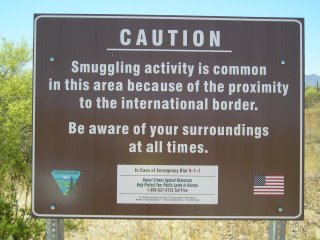 While everyone seems to know that fascism is a bad thing, it’s clear not enough people know what it actually means. And while everyone knows Islam is a religion, not enough people know that it dictates the social and political aspects of a Muslim’s life as well as the spiritual. To judge whether the phrase “Islamic fascist” is a fair label you need to understand more about Islam than is generally taught or discussed in the secularized West, except maybe in prison, and you need to know something of the history of fascism even though we’ve been taught the ideology was extinguished 60 years ago.
While everyone seems to know that fascism is a bad thing, it’s clear not enough people know what it actually means. And while everyone knows Islam is a religion, not enough people know that it dictates the social and political aspects of a Muslim’s life as well as the spiritual. To judge whether the phrase “Islamic fascist” is a fair label you need to understand more about Islam than is generally taught or discussed in the secularized West, except maybe in prison, and you need to know something of the history of fascism even though we’ve been taught the ideology was extinguished 60 years ago.
On the left there is much indignation. Long before they transformed the meaning of “lie”, “torture”, “gulag”, “domestic spying”, “patriot”, and “redeploy” leftists had already redefined “fascist”. For them a fascist is anyone who favors law and order over unbridled hedonistic debauchery. Bush and Rumsfeld for instance.
That is Keith Olbermann’s point:
Earlier Americans always found their way to the light and we can too. The confusion is about whether this Secretary of Defense and this administration are in fact now accomplishing what they claim the terrorists seek: the destruction of our freedoms…. This country faces a new type of fascism indeed.
Poor Olby. His freedom to broadcast a hateful and conspiratorial message every day is being impinged how? The video is surreal.
This Berkeley linguist would prefer to call them Islamo-creeps. They can’t be fascists. First of all because there are a few flavors that don’t agree precisely on the methods or urgency with which to pursue jihad. Second because the left had already sucked the meaning out of the word fascist back in the 60s. The linguist seems not to appreciate how different the German, Italian, and Japanese flavors of fascism were:
But like “terror,” and “evil” before it, “Islamic fascism” has the effect of reducing a complex story to a simple fable. It effaces the differences among ex-Baathists, Al Qaeda and Shiite mullahs; Chechens and Kashmiris; Hezbollah, Hamas and British-born Asians allegedly making bombs in a London suburb. Yes, there are millions of people in the Muslim world who wish the U.S. ill, and some of them are pretty creepy about it. But that doesn’t mean they’re all of a single mind and purpose, or that a blow against any one of them is a blow against the others.
There’s that leftist bugaboo again – it’s all so complicated. Notions like good, evil, right, wrong – these exist only in the minds of neocons and their fables. The left is trying as hard as they can to tolerate and embrace their exploited and confused Middle Eastern brothers. After all they might help topple the evil Bushitler someday! Whoops. Did I say evil? I meant dumb and greedy. The world is far too complex to make judgements about good and evil…but we can call political foes dumb greedy lying fascists all day long.
Before turning to saner sources let’s indulge in just one last opinion from the left. Yes it’s getting repetitive but you can always count on t r u t h o u t to reveal the leftist position in pure form:
Since, Mr. Bush, you have chosen to put the issue of fascism before the public, it begs a broader dialog on fascism’s role in our lives today. I accept the challenge to enter that dialog. Frankly Mr. Bush, many Americans refer to you as a fascist. There really isn’t any other way to state that than bluntly. Blowing up an airliner full of passengers is barbaric and completely unacceptable, regardless of the objectives of those involved, but it really doesn’t fit the definition of fascism.
From Webster’s New World Dictionary of the American Language:
FASCISM: A system of government characterized by rigid one party dictatorship, forcible suppression of opposition, private economic enterprise under centralized governmental control, belligerent nationalism, racism and militarism, etc.
That’s really the heart of the matter now isn’t it, Mr. Bush. One might wonder if you are troubled by by the specter of fascism in your inner thoughts when you cast the accusation wildly into the public discourse.
What would the people of Iraq say about fascism if asked? But then they haven’t been asked, have they – they’ve been liberated, of course. What would our founding fathers say about detention without due process, without end? Electronic surveillance of all Americans, without regard for the law? What is democracy if the citizens have no confidence in the integrity of their elections? Our military hurls five-hundred pound bombs all day and all night. They land on whom they land on. It is not an isolated act of madness, it is a coordinated act of state. All the while private corporations profit wildly.
Fascism, Mr. Bush, is not your strongest card. You should change the subject again.
Get a load of that tone. I wonder if he writes for Olby? The word arrogant comes to mind but that might only be because I’ve been reading too much leftist literature. They love the word arrogant. It’s pretty clear they’re just projecting. Anyway, yes, let’s have a dialog about fascism. Let’s start with that definition. In what ways does it describe the situation in the US? There are two major parties and many smaller ones. Opposition is loud, abusive, and unhindered. The economy is not centralized, despite the best efforts of leftists. And the US has inflicted its nationalism, racism, and militarism on whom exactly?
Like most thoughtful inhabitants of civilization I’m not sure fascist is quite the right word for the Islamos, but I’m pretty damn sure it applies better to them than it does to the Bush administration.
Having dealt with that childish nonsense let’s now turn to more serious opinions. For example Michelle Malkin thinks the qualifier is misleading:
I stopped using the terms “Islamic fascist” and “Islamofascism” a while ago, though, because they obscure rather than clarify. The views held by the Muslim jihadis who want to destroy us are not marginal views held only by a minority of “Islamic fascists.”
I concur, but the Washington Times makes a good case, especially if you remember that Islam subsumes politics:
Fascism is a chauvinistic political philosophy that exalts a group over the individual — usually a race or nation, but in this case the adherents of a religion. Fascism also espouses centralized autocratic rule by that group in suppression of others. It usually advocates severe economic and social regimentation and the total or near-total subordination of the individual to the political leadership. This accurately describes the philosophies of Hitler, Mussolini, the leaders of Imperial Japan and other fascistic regimes through history. It also describes Thursday’s terrorists.
It very accurately describes the philosophy of al Qaeda, Hezbollah, Hamas and many other stripes of Islamism around the world. All the elements are present. The ideology is chauvinistic, regarding non-Muslims as a lesser breed of expendable or contemptible dhimmis and infidels. It favors autocracy and severe social and economic restrictions, as did the Taliban. It demands the total subordination of the individual to the group — sometimes manifesting in murderously suicidal deaths like the fiery destruction Britain’s would-be bombers sought. This is not mainstream Islam, of course. It is a corruption of the faith.
I disagree with that last sentence. The Muslims who are at war with civilization are not motivated by a misunderstanding or twisting of Islam, they are motivated by its most fundamental tenets: the ideology of jihad and the imposition of sharia and Islam itself on the entire world. That these tenets can be traced all the way back to Mohammed and that they are deeply held by millions of fanatics only makes the threat to civilization that much more severe.
Daniel Pipes notes his trouble settling on a phrase:
The use of Islamic fascists should be seen as part of a decades-long search for the right term to name a form of Islam that is recognizably political, extreme, and often violent. I have already confessed in that I am on my fifth term (having previously used neo-orthodox, fundamentalist, and militant, and now using radical and Islamist). While Islamic fascists beats terrorists, let’s hope that a better consensus term soon emerges. My vote is for Islamists.
The difficulty Pipes and others are having is bringing themselve to say precisely what I just said.
If Islam is all about peace and tolerance then why is everyone afraid to criticize it? Hmmm, I wonder. Does it have anything to do with bombs and sawing off heads? Literal Islamophobia? Leftists never tire in their vituperation of Christians, Bush, Neocons, Israel, rednecks, corporations – and they never seem to suffer any recriminations for it. To them Freedom of Speech means tolerating the disclosure of any national secret the New York Times sees fit to print, but when it comes to tolerating a few Mohammed cartoons, well then it’s time to toss freedom out the window in favor of a sudden respect for decency and religion.
For the final say I refer you to just one of many examples coming straight from the proverbial horse’s mouth:
FN: And this sums up your vision of Jihad today? Is this the sum of your own approach to Islam and the problems affecting Muslims?
ABB: This is the Islamic view of things. We must never compromise, relent, give up, submit to our kafir enemies. We must always keep to the Islamic path, jihad in the name of Shariah, and never be apologetic.
So I agree that we must never be apologetic about being called ‘radicals’ today. Even during the time of the Prophet his enemies called him a madman! So being called a ‘radical’ is not as bad! We should not apologise for this, or compromise in our jihad. Today they call us ‘radicals’, tomorrow they will call us something else. These obstacles will always be there, because the kafirs fear us when we get stronger.
Remember that jihad is what brought Islam to power and built our community. There can be no Islam without jihad. Why, even if you want to build a Capitalist or Communist state you need to have a jihad; a jihad for capitalism or a jihad for communism. So why cant Muslims engage in a jihad for Islam and Shariah?
Oops. Does this radical know the infidels are listening? Does it matter?









